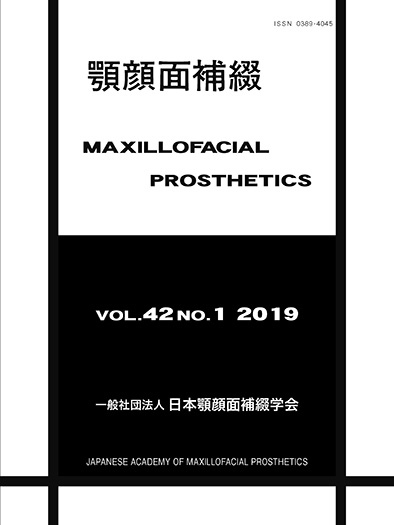42 巻, 1 号
選択された号の論文の11件中1~11を表示しています
- |<
- <
- 1
- >
- >|
総説
-
2019 年 42 巻 1 号 p. 1-3
発行日: 2019年
公開日: 2020/03/12
PDF形式でダウンロード (478K) -
2019 年 42 巻 1 号 p. 4-8
発行日: 2019年
公開日: 2020/03/12
PDF形式でダウンロード (362K) -
2019 年 42 巻 1 号 p. 9-12
発行日: 2019年
公開日: 2020/03/12
PDF形式でダウンロード (463K) -
2019 年 42 巻 1 号 p. 13-17
発行日: 2019年
公開日: 2020/03/12
PDF形式でダウンロード (679K) -
2019 年 42 巻 1 号 p. 18-23
発行日: 2019年
公開日: 2020/03/12
PDF形式でダウンロード (282K) -
2019 年 42 巻 1 号 p. 24-32
発行日: 2019年
公開日: 2020/03/12
PDF形式でダウンロード (358K) -
2019 年 42 巻 1 号 p. 33-38
発行日: 2019年
公開日: 2020/03/12
PDF形式でダウンロード (259K)
原著
-
2019 年 42 巻 1 号 p. 39-44
発行日: 2019年
公開日: 2020/03/12
PDF形式でダウンロード (109K)
研究論文
-
2019 年 42 巻 1 号 p. 45-50
発行日: 2019年
公開日: 2020/03/12
PDF形式でダウンロード (854K) -
2019 年 42 巻 1 号 p. 51-56
発行日: 2019年
公開日: 2020/03/12
PDF形式でダウンロード (940K)
認定医症例報告
-
2019 年 42 巻 1 号 p. 57-64
発行日: 2019年
公開日: 2020/03/12
PDF形式でダウンロード (1051K)
- |<
- <
- 1
- >
- >|
